16 Jan MY SPANISH FILM VIEWED IN 2011RT ALCO
ERT ALCO| Filmmaker, Writer, Lecturer and Experimental Film programmer.
FILM: Notes of the ephemeral by Chus Domínguez
For twenty days the filmmaker Chus Domínguez was hosted in the Eslava’s pension, with the intention to develop an audiovisual documentary about a room in the old town of Pamplona. The resulting work, prepared under the Project X Films 2010 of the Festival Punto de Vista, is a serenely observational documentary, personal and universal. This series of notes captured as a daily shot -edited along each day- reveals, chronologically, the presence of the filmmaker and his brief relationship with the people who stayed in different rooms. The result is a reflection on the process of making the documentary, brilliantly solved through dozens of portraits of people virtually unknown and the inevitable self-portrait of the author.
QUIM CASAS | Movie Critic and Lecturer of Scriptwriting.
Isaki Lacuesta’s career 2011
More than just a film, I would like to highlight the entire Isaki Lacuesta’s career with his recent work La Noche que no acaba (The night that never ends); a close-up (that has nothing to do with current biographical approaches) to the figure of Ava Gardner and her stay in Spain, presented as a ghosts and myths invocation rather than following realities and platitudes; Los pasos dobles (The double steps) a reinvention of the adventure tales and an inquiry about European and African cultures, and its derivation or complement; El Cuaderno de Barro, something like if Isaki and Miquel Barceló crossed to the other side of tfhe mirror in relation to the above mentioned film; and his audiovisual letters with the Japanese filmmaker Naomi Kawase included in the CCCB’s “Correspondence (s)” film programmes, with its beautiful way to film the marks of the white sheets on a naked body, the agony of a rusty boat that sinks into the water and the flickering of a fantastic emotion.
LLUIS MIÑARRO | Filmmaker.
Film: Futures Market by Mercedes Álvarez
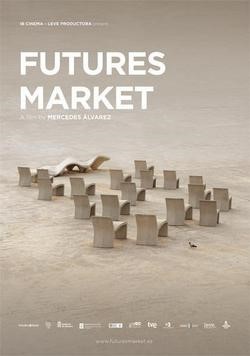 While also considering El Extraño caso de Angelica (The Strange Case of Angelica) by Manoel de Oliveira as a Spanish film, I’ve decided to pick up a film in which I have not been intervened with: Futures Market by Mercedes Alvarez. I’m also interested in the irregular, the imperfect and the peripheral. Mercedes’ recent work could be seen as three films in one and maybe full of references to classicism, but has moments of shattering true about the current situation: the real-state agents’ convention is more significant than any speech about the status of the economy nowadays or about the stupidity of the servants of the system. The seller that doesn’t want anything to be sold is, provably, the only metaphor for a hopeful future. With serenity, tenderness, and perhaps with an excessive need for rigorous explanations, the film, however, becomes one of the few political artefacts in recent Spanish cinema.
While also considering El Extraño caso de Angelica (The Strange Case of Angelica) by Manoel de Oliveira as a Spanish film, I’ve decided to pick up a film in which I have not been intervened with: Futures Market by Mercedes Alvarez. I’m also interested in the irregular, the imperfect and the peripheral. Mercedes’ recent work could be seen as three films in one and maybe full of references to classicism, but has moments of shattering true about the current situation: the real-state agents’ convention is more significant than any speech about the status of the economy nowadays or about the stupidity of the servants of the system. The seller that doesn’t want anything to be sold is, provably, the only metaphor for a hopeful future. With serenity, tenderness, and perhaps with an excessive need for rigorous explanations, the film, however, becomes one of the few political artefacts in recent Spanish cinema.
ELENA OROZ | Lecturer specialises in documentary. Co-founder of Blogs&Docs
Film: Color Runaway Dog by Andrés Duque
A winding path, dreamlike and sensual, throughout The Garden of Earthly Delights by Hieronymus Bosch. A hypnotic sequence, and I would almost say centripetal, which plunges us into a syncretic ritual: the Naiguatá drums in Venezuela. The mired teenage fervours of Angelita and Miguel Ángel in a speculative homage to the writer Andrés Caicedo… In Color Runaway Dog, the first feature film by Andrés Duque, some of the most fascinating and meaningful video-graphic images of 2011 collide, as if in a kaleidoscope.
We find ourselves in a film that resists narrative explanation. When writing about it, only the sensory adjectified image seems appropriate to try to grasp a meaning which, from its own title, appears elusive. However, three images might account the proposed autobiographical tale: an accident, a wound; a train, a gateway; and a reconciliation with the past, now embodied in a cat.
In a year which, with varying degrees of success, the filmed diaries had burst into Spanish cinema (with Guest by Jose Luis Guerin, True Love by Ion Sosa or Notas de lo efímero by Chus Domínguez), Color Runaway Dog stands out as a radical contemporary film. Not only for its work with the digital camera, used as a pen, which each image is presented as a creation, but also for its conception of identity as a collage and as a process (there is certainly something queer in all that). An elusive self, the author, who gets tangled in the protean genre of self-fiction.
DANIEL V. VILLAMEDIANA | Filmmaker.
Film: The Skin I Live in by Pedro Almodóvar
 Almodovar is in top form as a director with his lastest film. Most of the times he is misunderstood by his own country as they do not grasp his ways of directing and ideas He has proven himself time and time again that he belongs in the elite group of directors such as Hitchcock or Brian de Palma,who turn improbable films into a form of art that is highly believable and will have a firm place in film history Cinema is the art of faith so we ought to believe in the movies to be able to live in them. Almodovar spreads his believes and faith to the viewers and fans through his powerful images, changing the conventional narrative. Being fascinated with a body, a perverse glance, instint, madness and obssesion are some of the elements of the film The skin I live in, a movie which draws power and emotion,breaking down the weak cinema which is plays in our venues.
Almodovar is in top form as a director with his lastest film. Most of the times he is misunderstood by his own country as they do not grasp his ways of directing and ideas He has proven himself time and time again that he belongs in the elite group of directors such as Hitchcock or Brian de Palma,who turn improbable films into a form of art that is highly believable and will have a firm place in film history Cinema is the art of faith so we ought to believe in the movies to be able to live in them. Almodovar spreads his believes and faith to the viewers and fans through his powerful images, changing the conventional narrative. Being fascinated with a body, a perverse glance, instint, madness and obssesion are some of the elements of the film The skin I live in, a movie which draws power and emotion,breaking down the weak cinema which is plays in our venues.
ROSA BLAS TRAISAC | Filmmaker and member of CIMA
Film: Toma Cero. Pionera by Rosa Blas Traisac
 Toma O Pionera is a documentary which talks about the first women who made movies in Spain. It is a low cost film that nearly did not make it. Making a movie is an act of determination,to be willing to overcome any trouble, and taking account of the consequences. My astonishment to Pilar Miro and Rosario Pi has got bigger during the production process of Toma 0. Both directors were touched by illnesses in their chilhood but they broke all the stereotypes allocated to women of their time. Female directors hardly appear throughout history, we still are single, always starting. We have few allies. First women directors left the seed. We have to continue despite the economical crisis and the disgusting smell which comes from the future.
Toma O Pionera is a documentary which talks about the first women who made movies in Spain. It is a low cost film that nearly did not make it. Making a movie is an act of determination,to be willing to overcome any trouble, and taking account of the consequences. My astonishment to Pilar Miro and Rosario Pi has got bigger during the production process of Toma 0. Both directors were touched by illnesses in their chilhood but they broke all the stereotypes allocated to women of their time. Female directors hardly appear throughout history, we still are single, always starting. We have few allies. First women directors left the seed. We have to continue despite the economical crisis and the disgusting smell which comes from the future.
ALBERTO MORAIS | Filmmaker.
Film: Futures Market by Mercedes Álvarez
In a totally different moment in modern cinematography, when the image was beautiful because it needed to be, Mercedes Alvarez’ second film appears – almost whispered by Walter Benjamin – and shines by itself. A political punch that contains the complex situation Spain is currently suffering: the crisis. A modern movie because of its honesty; a movie that uses simple narrative games to generate dialectics on the ruins of the world we live in; and it does so with no complications. Showing a tradition devastated by the present, or maybe by the future that has already arrived.
Futures Market emanates poetry like neorealist pieces did once, without embellishment or deconstructions. It appears as it is, without the surprises that prevail on which supposed to be the current. Alvarez introduces the viewer in the actual issue, and she confines him/her slowly but with a fair amount of humour, almost like Tati used to. A comedy that is made from time and geographical mirrors that reflect the day to day we all experience, but also gives you enough time to contemplate the universe. A truly terrible universe; the one that we live on.
EULALIA IGLESIAS | Journalist specializes in Cinema and Media. Lecturer of innovation media formats and History of cinema. Member of Caiman Cuadernos de Cine editorial team.
Film: The double steps by Isaki Lacuesta
The Spanish film released in cinemas that most fascinated me in 2011 is Los pasos dobles (The double steps) by Isaki Lacuesta, right next to La piel que habito (The skin I live in), showing that an acclaimed director like Pedro Almodóvar, who has nothing to lose, can take more risks than many young filmmaker. Only few directors can manage to turn a film into an adventure in itself. An invitation, after leaving at home the topical resources of a biographical cinema, to explore and get lost in the Dogon Country following the footsteps of one of those elusive characters that populate Lacuesta’s films; the novelist and French painter Francois Augiéras. Los pasos dobles reveals the palimpsestic nature of any work of art: the film overwrites landscapes, faces and images already printed by Jean Rouch, Luis Buñuel, Claire Denis, Pier Paolo Pasolini, the Hollywood’s African adventures cinema, the border’s western genre, Miquel Barceló’s paintings and Augiéras’ own life. The film proves that Isaki Lacuesta is one of the most powerful filmmakers in contemporary cinema.
ADÁN ALIAGA | Filmmaker.
Film: Open 24 horas by Carles Torras
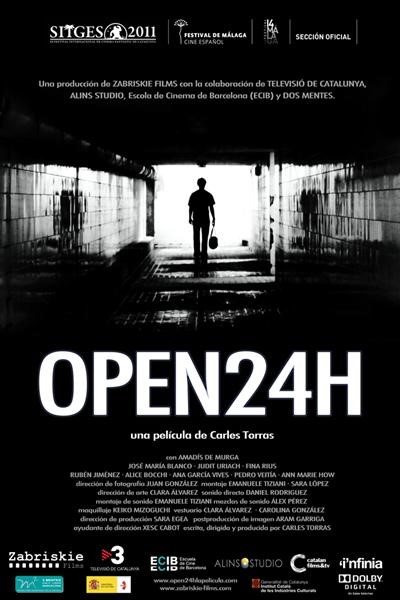 A perfect piece of work, with specific locations chosen for different parts of the film and a montage of images with each second of music and sounds specially chosen, makes the film Open 24 horas highly recommended. It is an unusual type of movie for the spanish film scene but definitely a must see film. The last scene of the film is exceptional because some how it justifies all the previous scenes of the film and gives meaning to story and brings the film together as a masterpiece. Some of the scenes portrayed in the film awaken memories in me of 2 other spanish films that are brilliant in their own right “Las horas del día” from Jaime Rosales and “Nómadas” from Gonzalo Lopez Gallego.
A perfect piece of work, with specific locations chosen for different parts of the film and a montage of images with each second of music and sounds specially chosen, makes the film Open 24 horas highly recommended. It is an unusual type of movie for the spanish film scene but definitely a must see film. The last scene of the film is exceptional because some how it justifies all the previous scenes of the film and gives meaning to story and brings the film together as a masterpiece. Some of the scenes portrayed in the film awaken memories in me of 2 other spanish films that are brilliant in their own right “Las horas del día” from Jaime Rosales and “Nómadas” from Gonzalo Lopez Gallego.
In the end, I think Open 24 horas is one of the most interesting films of the last year and has A different way to direct and tell a story, which puts its director, Carlos Torres, within the group of interesting filmmakers of the new Spanish film scene.
FRAN GAYO | Programmer at BAFICI
Film: La vida sublime by Daniel V. Villamediana.
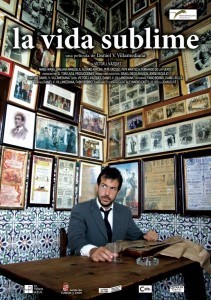 No many Spanish Films for some time now have been as misunderstood and criticised (I find hilarious who qualify it as right wing film, that´s how things go…) even as bad protected as La Vida Sublime by Daniel Villamediana. From my point of view this film conceals something socking that make me own its images. In other words, I think about the film as Villamediana has never existed. Because there is an explicit manner to tribute the lost generation during the Franco regime, agreed, but going further during to the long journey of the main character from Castilla to the South of Spain, I see an unbounded search to rethink the history of Spain and open questions about which space has been left for our generation. A cooked history, spiced and almost chew has been legate to us. Villamediana´s film try to go deeper into the ingredients knowing that there are processes hardly reversible.
No many Spanish Films for some time now have been as misunderstood and criticised (I find hilarious who qualify it as right wing film, that´s how things go…) even as bad protected as La Vida Sublime by Daniel Villamediana. From my point of view this film conceals something socking that make me own its images. In other words, I think about the film as Villamediana has never existed. Because there is an explicit manner to tribute the lost generation during the Franco regime, agreed, but going further during to the long journey of the main character from Castilla to the South of Spain, I see an unbounded search to rethink the history of Spain and open questions about which space has been left for our generation. A cooked history, spiced and almost chew has been legate to us. Villamediana´s film try to go deeper into the ingredients knowing that there are processes hardly reversible.
LLUIS GALTER | Filmmaker.
Film: The Lord Worked Wonders In Me and The Names of Christ by Albert Serra.
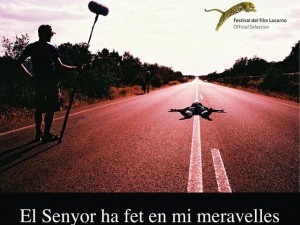 Registered outside commercial channels, “The Lord Worked Wonders In Me ” and “The Names of Christ”, both Albert Serra’s films commissioned by the CCCB and the MACBA respectively, are imperfect and boring at times (many), but both have the ability, the courage and the “nerve” to sacrifice their roundness (thanks to the motivation of a museum context) to launch ideas as untimely, to create and show the space where strange outbreaks of lucidity emerge, the artist’s life as a raw work of Art, more or less sophisticated. Whether through a shooting or a plot, always in the realm of ambiguity, the two pieces offer the possibility of new possibilities. Like the Avant–gardes, perhaps; they are always there, a little isolated, orphan, inspiring, inimitable, excessive, boring.
Registered outside commercial channels, “The Lord Worked Wonders In Me ” and “The Names of Christ”, both Albert Serra’s films commissioned by the CCCB and the MACBA respectively, are imperfect and boring at times (many), but both have the ability, the courage and the “nerve” to sacrifice their roundness (thanks to the motivation of a museum context) to launch ideas as untimely, to create and show the space where strange outbreaks of lucidity emerge, the artist’s life as a raw work of Art, more or less sophisticated. Whether through a shooting or a plot, always in the realm of ambiguity, the two pieces offer the possibility of new possibilities. Like the Avant–gardes, perhaps; they are always there, a little isolated, orphan, inspiring, inimitable, excessive, boring.
CARLOS LOSILLA | Lecturer of Film Theory and Member of Caimán Cuadernos de Cine editorial team.
Film: The World that Was and Is by Pablo Llorca.
With El mundo que fue y el que es (The World that Was and Is), Pablo Llorca procures one of the best Spanish films of the year with an unlikely topic for him: the history of the Spanish Communist Party from the postwar period to the present day, emphasizing the contrast between those who fit harm than good to their times and those who prefer fidelity to their ideals. But, of course, whilst other Spanish filmmakers succumbed in the attempt with pompous reconstructions and grandiloquent speeches, Llorca, however, makes spiritual history, to describe it in some way. I don’t mean he does educational film (like the last Rossellini’s style, although there is some of it as well), or that he insists on absolutely purity (in the style of Straub & Huillet, even if getting close to them, as well as to Bresson). El mundo que fue… is a very low budget film that makes the necessity a virtue and becomes a kind of summa of Llorca’s work. The film spans decades of Spanish recent history, but with an almost Franciscan simplicity: the chase scene seems deconstructed and the recreation of Franco’s prison gets an ascetic appearance that makes its character a sort of a laic saint, with a sacrificial figure very close to others that populate Lorca’s films. But here, the evil that we must fight (another of his favorite topics) is time, passing by and ravages. Of course, there is a testimonial tone that can be frightening, but Lorca’s style of abstraction – which, paradoxically, makes us feel closer to the characters – just relies on the idea that any history is a failure, and ultimately, what is left it’s just each one of us, with our obsessions and memories. And what is fascinating then, not so much the facts, but the clash between the desire to reckon them and the current cinematic language difficulties to do so. The film that was and is: Llorca’s work is, as well, a reflection on itself and its significance in today’s cinema.
BARBARA ZECCHI | Professor of Spanish, Gender and Film Studies, Languages, Literature and Cultures Department, Interdepartmental Cinema Programme, University of Massachusetts.
Film: From your window to mine by Paula Ortiz
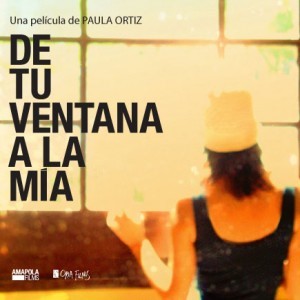 The debut of Paula Ortiz, De tu ventana a la mía (From your window to mine) (Pilar Miró Seminci Prize 2011), weaves the stories of three women- Violeta (Leticia Dolera), Inés (Maribel Verdú) and Luisa (Luisa Gavasa) – stories clearly defined by temporal and spatial coordinates, in what has been called a “narrative puzzle”. Every experience is placed temporarily in different times (Violeta in the spring of 1923, Inés in the summer of 1940 and Luisa in the winter of 1975), but elapsing in one place: the countryside of Aragon, with the symbolic presence of a window. The chronological change corresponds to a change in the space picture.
The debut of Paula Ortiz, De tu ventana a la mía (From your window to mine) (Pilar Miró Seminci Prize 2011), weaves the stories of three women- Violeta (Leticia Dolera), Inés (Maribel Verdú) and Luisa (Luisa Gavasa) – stories clearly defined by temporal and spatial coordinates, in what has been called a “narrative puzzle”. Every experience is placed temporarily in different times (Violeta in the spring of 1923, Inés in the summer of 1940 and Luisa in the winter of 1975), but elapsing in one place: the countryside of Aragon, with the symbolic presence of a window. The chronological change corresponds to a change in the space picture.
The puzzle of Ortiz has an opposite role of the postmodern fragmentation theorized by Fredric Jameson. If the jamesonian fragmentation corresponded to the schizophrenia of the individual suffering the crisis of the loss of historicity, Ortiz’s film breaks with the aesthetic model of fragmentation, weaving and building, or preferably, keeping the pieces together -to continue with the puzzle’s metaphor – of an eternal and universal feminine essence.
Moreover, the film remarks with intelligence a women’s paradigmatic space: the window, a boundary and an opening between the public and private sphere, the point of communication and separation between two different and opposite spaces. In the essay Desde la ventana (1987), Carmen Martín Gaite elaborated the metaphor of the “windower”, a disruptive and defiant woman. The women created by Ortiz are “windowers”, whose agentic core of personality is repeated cyclically: Violet, Inés and Luisa share dreams, desires and struggles.
In turn, metacinematically, Paula Ortiz urge her audience to watch De tu ventana a la mía giving her point of view: the one of a “windower” .
JOSE LUIS GUERÍN | Filmmaker.
Film: Hollywood Talkies.
Experimental Documentary
For Spanish experimental documentary films the year 2011 began in Rotterdam with a young man playing the drum possessed by the Caribbean rhythm. It delivered one of its biggest battles when a hermit on the top of a tree in the African savannah invented a language that left out of the game the most ordinary criticism in our country, and ends with a Count Dracula from Córdoba populating some commercial cinemas in Barcelona. Or what is the same: Color Runaway Dog (Andrés Duque), The Double Steps (Isaki Lacuesta) and Hollywood Talkies (Óscar Pérez and Mia de Ribot) are the films by three different directors, who a decade ago began to develop a career difficult to classify in the Hispanic audiovisual universe, that made an important step forward into the international arena. Ten years have passed now and, possibly for the first time in history, we can speak of an experimental documentary film scene in Spain. These films are important, these filmmakers are important but, perhaps, what is more important today is the existence of a community, a network of people, places, events and publications that are mutually supportive. Endless: don’t let it lose.

No Comments